Did you know some dog breeds are strong enough to pull sleds across frozen tundras or take down wild boars? Dogs aren’t just loyal companions; they’re also powerful animals with incredible strength and stamina.
While many people choose dogs for their temperament or looks, others are drawn to breeds known for sheer muscle and grit. From working dogs bred for endurance to guard dogs with intimidating builds, these dominant breeds are more than just bark; they pack serious bite.
Whether you’re curious about the strongest breeds or thinking of bringing one into your home, understanding what makes them powerful is key. This guide dives into the top dog breeds known for their physical power, exploring what sets them apart and why their strength has made them legends in the canine world.
Let’s take a look at some of the most commanding dogs on the planet.
Dominant Dog Breeds Known for Their Physical Power
1. Rottweiler
The Rottweiler is a strong, compact working dog known for its broad chest, muscular build, and powerful stance. Originally descended from ancient Roman drover dogs, it was bred to herd livestock and pull carts, showcasing both strength and endurance.
According to the AKC, this breed is confident and watchful, making it a natural protector of its home and family. Despite its reputation for being tough, a properly trained Rottweiler is calm, intelligent, and surprisingly affectionate with loved ones.
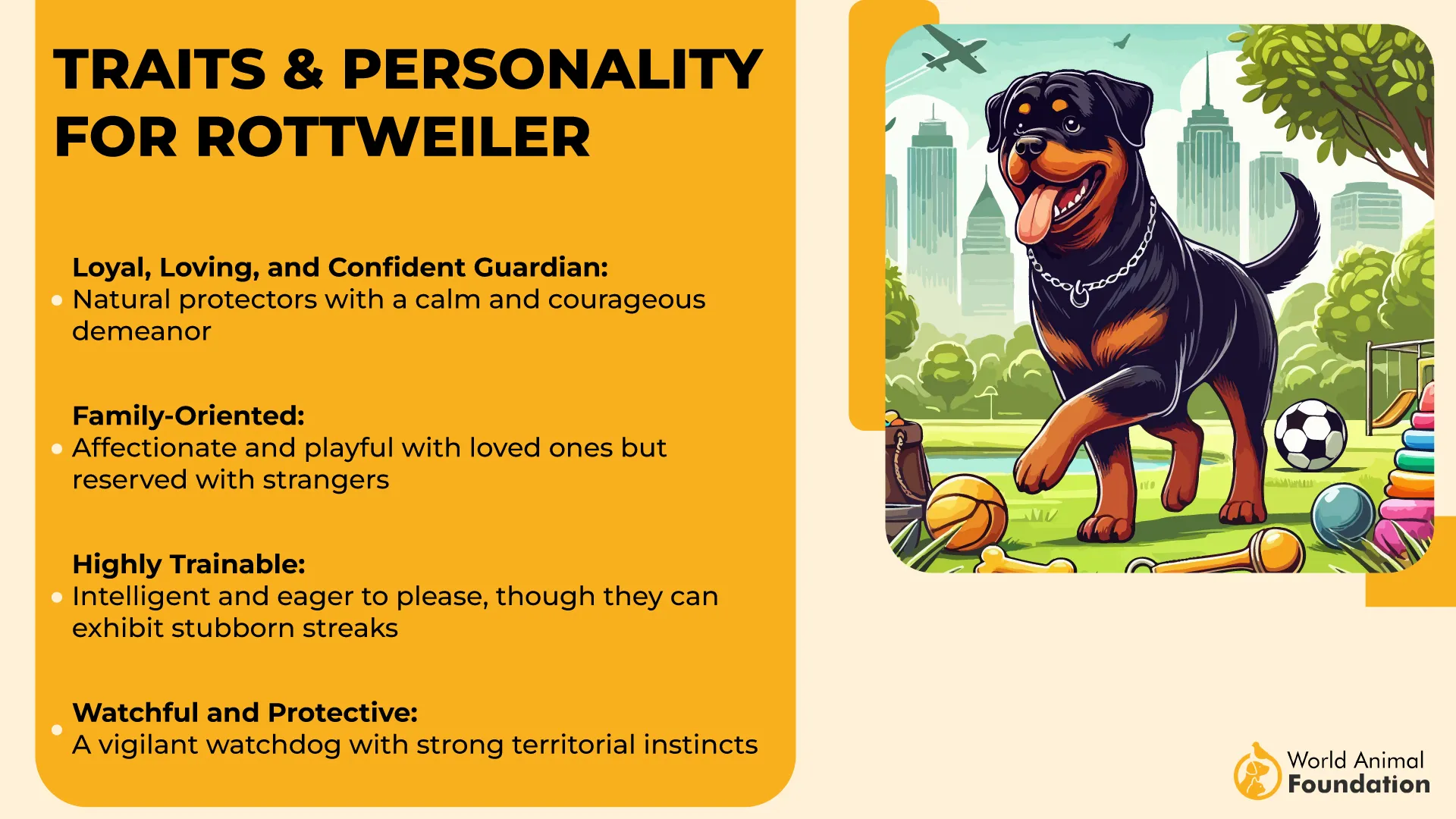
Due to its guarding instincts, early socialization and consistent training are critical to raising a balanced Rottweiler. These dogs are highly responsive to commands and enjoy having a clear role in the household or workplace.
Rottweilers thrive with regular exercise and tasks that challenge their minds. Without mental stimulation and physical activity, they may become bored or stubborn, but with the right environment, they’re incredibly loyal and dependable.
Their imposing appearance can be intimidating to strangers, but beneath the surface lies a dog that is fiercely loyal, deeply bonded to its family, and often eager to work or play.
Fun Fact
Rottweilers can trace their heritage back to Roman legions, where their ancestors were used to drive cattle and guard soldiers’ camps during long marches across Europe.
2. Mastiff
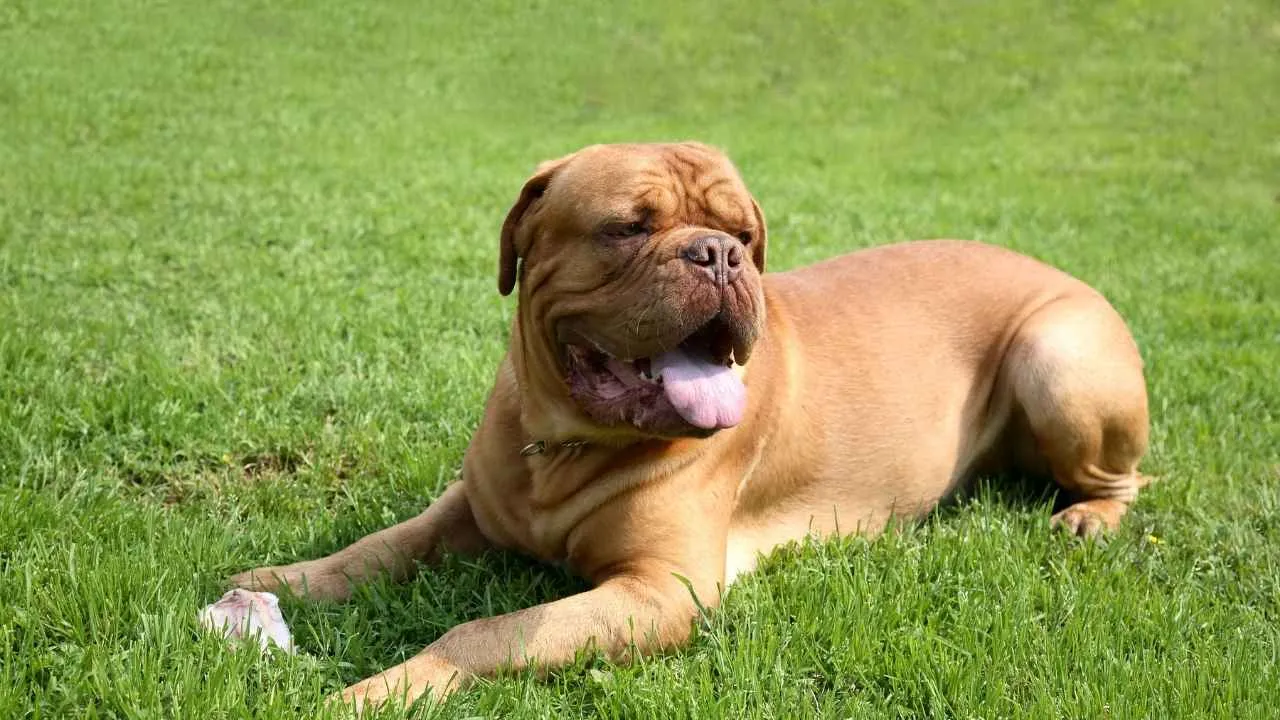
The Mastiff stands as one of the most physically powerful dog breeds, known for its enormous size and ancient lineage. With origins tracing back thousands of years, this breed once served as a war dog and guardian across multiple civilizations.
Today, the Mastiff remains an imposing figure, with a massive head, deep chest, and muscular build that commands respect. Despite their fearsome appearance, Mastiffs are often described as gentle giants with calm and loving temperaments.
These dogs are fiercely protective but not typically aggressive without cause. They tend to be reserved with strangers yet loyal and affectionate with family, making them excellent home guardians when well-trained.
Because of their size, Mastiffs need early obedience training and socialization to develop into well-mannered companions. They also benefit from moderate exercise, though their calm demeanor means they don’t require intense physical activity, as noted by Britannica.
Though massive in size and one of the strongest dog breeds, their nature is surprisingly soft, often bonding closely with their family and even showing patience with children when raised with proper boundaries.
Fun Fact
Ancient artwork dating back to 3000 BCE features dogs resembling Mastiffs, highlighting their role as one of the oldest and most enduring breeds in human history.
3. Doberman Pinscher
The Doberman Pinscher is a sleek, athletic breed originally developed in the late 19th century by a German tax collector needing a loyal guard dog. Its body is built for speed, power, and agility, giving it a strong yet elegant silhouette.
This breed is known for its keen intelligence and unwavering loyalty to its family. It often forms deep bonds with its owners and is alert to anything unfamiliar, making it an outstanding watchdog and protector.
While Dobermans can appear intimidating, they are typically affectionate and obedient when properly trained. They respond well to structured routines and thrive on clear leadership and consistent guidance.
As per WebMD, regular exercise is essential for this high-energy breed, along with mentally stimulating activities that prevent boredom. Dobermans do well in canine sports, obedience training, and active lifestyles that keep their minds and bodies engaged.
In the right environment, a Doberman is both a fearless guardian and a gentle companion, combining sensitivity with a courageous spirit that shines in protective roles.
Fun Fact
Despite their strong guarding instincts, Dobermans are often called “Velcro dogs” because they stick so closely to their owners, preferring to be by their side at all times.
4. German Shepherd
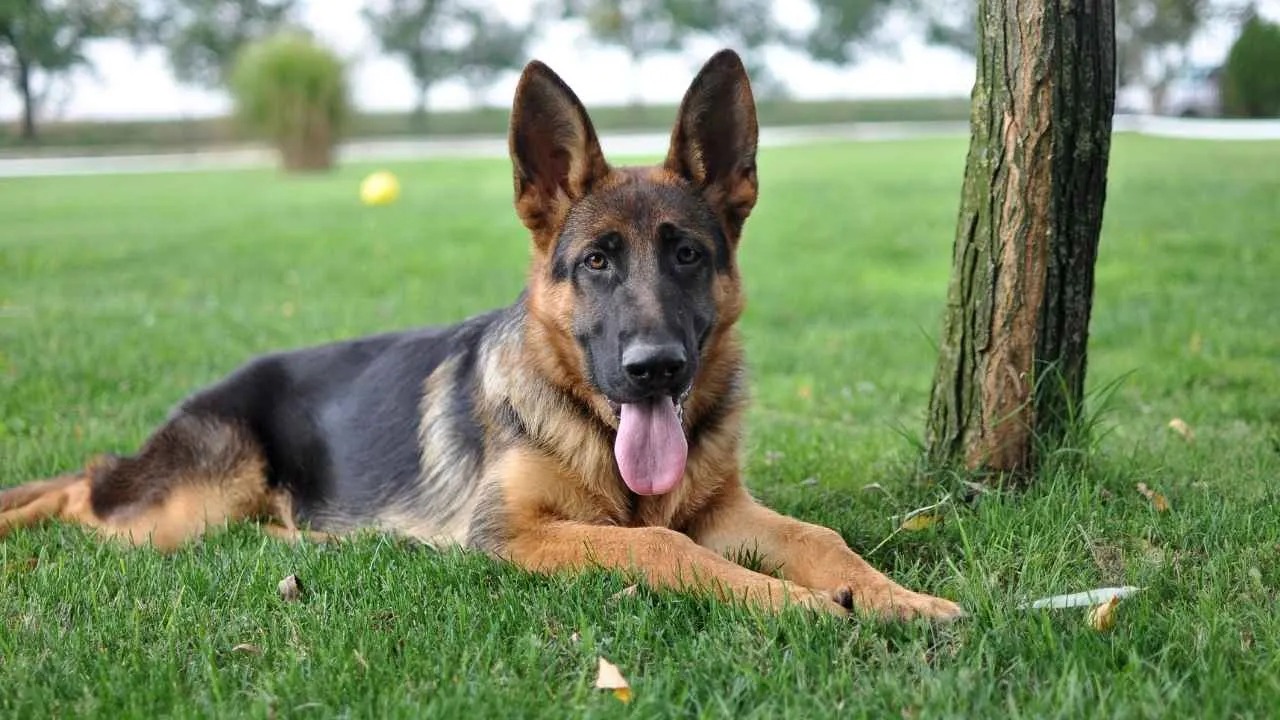
The German Shepherd is a powerful and highly intelligent breed known for its versatility in police, military, and service work. It was originally bred in Germany for herding and guarding sheep, traits still evident in its protective nature and work ethic.
This breed combines a muscular build with high energy and endurance, making it suitable for physically demanding tasks. German Shepherds are confident and alert, with a strong instinct to protect and serve.
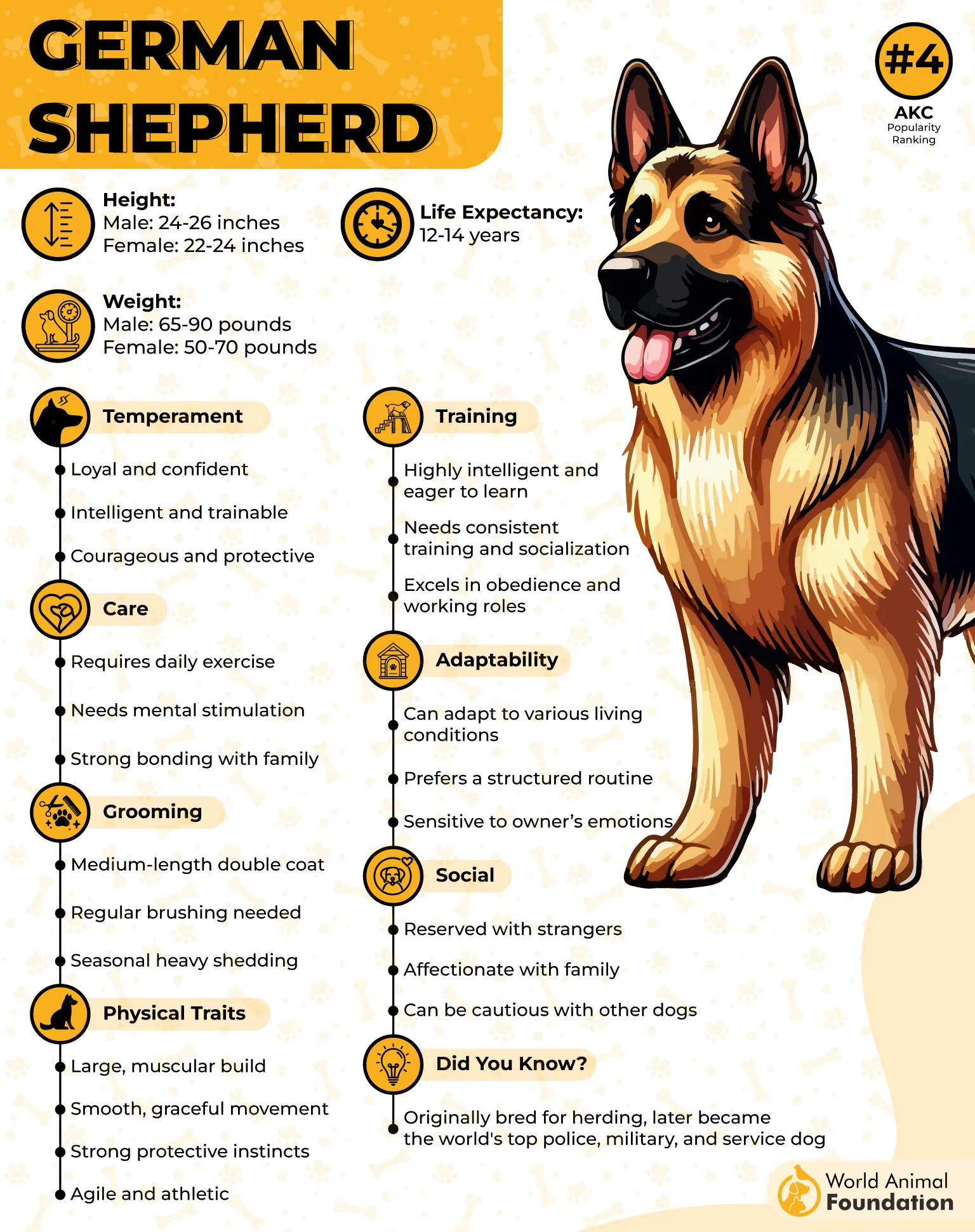
They are highly trainable and excel in obedience, especially when paired with consistent, reward-based training methods. Socialization from a young age ensures they are well-adjusted and not overly reactive in unfamiliar situations.
Exercise is vital for a German Shepherd, not just physically but mentally. As per PDSA, these dogs enjoy tasks that challenge them, such as agility training, tracking games, or structured play with their handlers.
Despite their serious working abilities, German Shepherds are deeply devoted to their families. They often form strong attachments and are especially protective of children and other household members.
Fun Fact
German Shepherds were among the first dogs used for search-and-rescue and bomb detection in both World Wars due to their unmatched intelligence and trainability.
5. Cane Corso
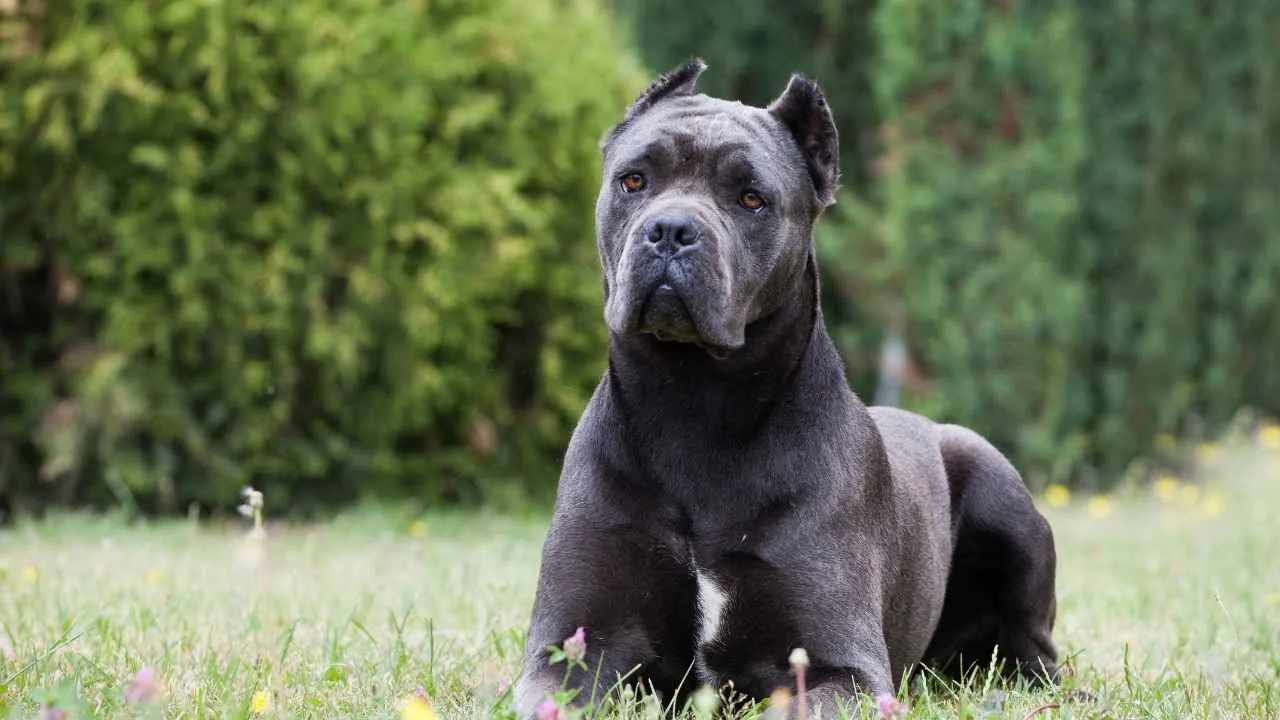
The Cane Corso is a large, muscular dog bred in Italy for guarding property and hunting big game. It’s a descendant of Roman war dogs and has maintained a reputation for strength, loyalty, and natural protectiveness.
This breed stands out for its combination of raw power and mental focus. While imposing in appearance, it’s highly intelligent and trainable, thriving under experienced owners who offer structure and clear guidance.
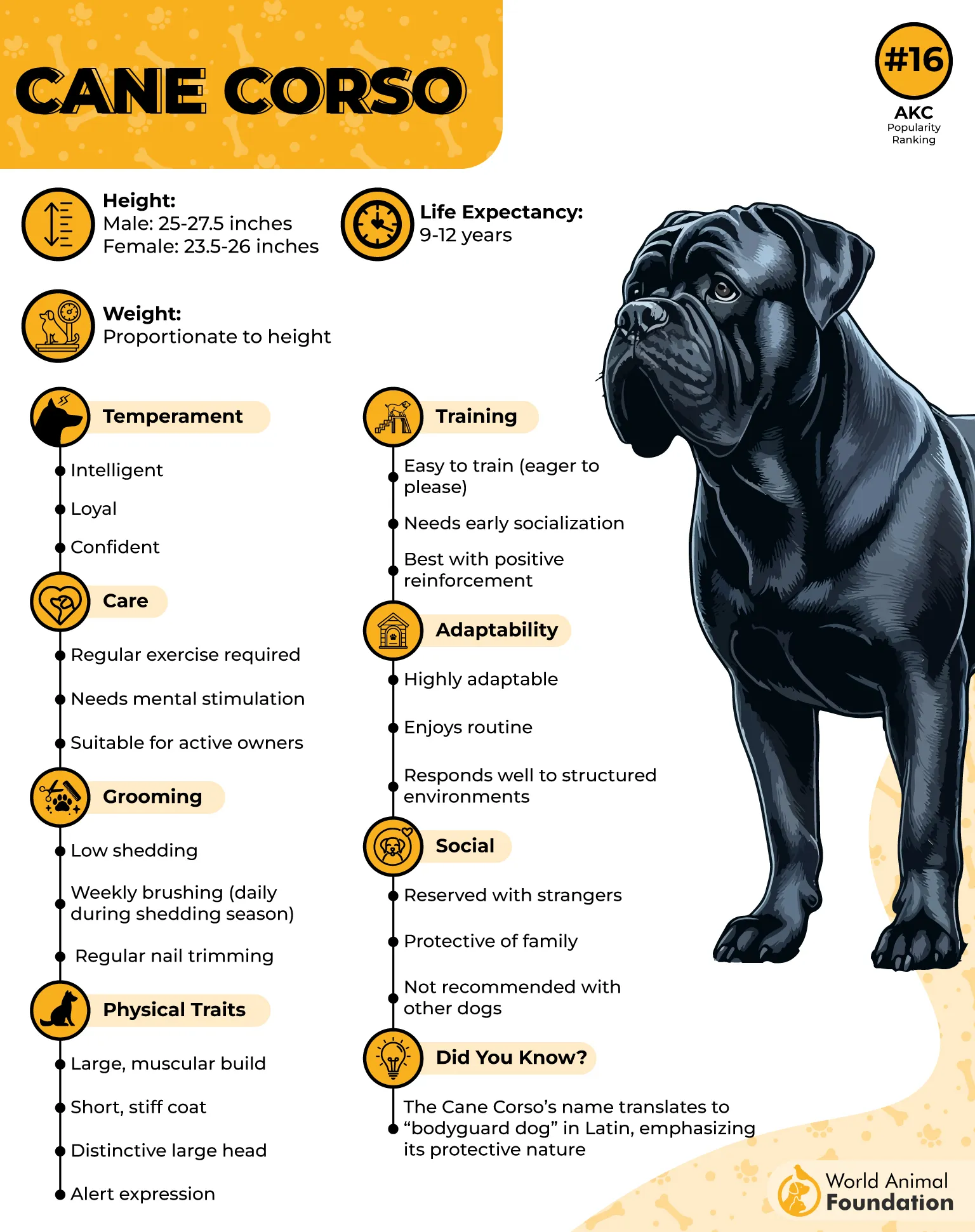
Cane Corsos form strong bonds with their families and are known to be affectionate and attentive in the home. However, they are naturally wary of strangers and make excellent watchdogs when properly socialized.
Because of their size and drive, Cane Corsos need space to move and a job to do. They do best with daily exercise, mental challenges, and firm but positive leadership.
This isn’t a breed for passive households. A Cane Corso requires consistency and purpose to flourish, rewarding the right owner with fierce devotion and protection.
Fun Fact
The name “Cane Corso” roughly translates from Latin to “guardian dog,” reflecting its long-standing role as a protector of farms and estates.
6. Great Dane

The Great Dane is a true giant of the dog world, originally bred to hunt wild boars and guard noble estates. Despite its enormous size, this breed is known for its calm and even temperament.
Its physical strength is matched by an elegant frame, featuring long limbs, a deep chest, and an alert posture. When it stands on its hind legs, a Great Dane can easily tower over most adult humans.
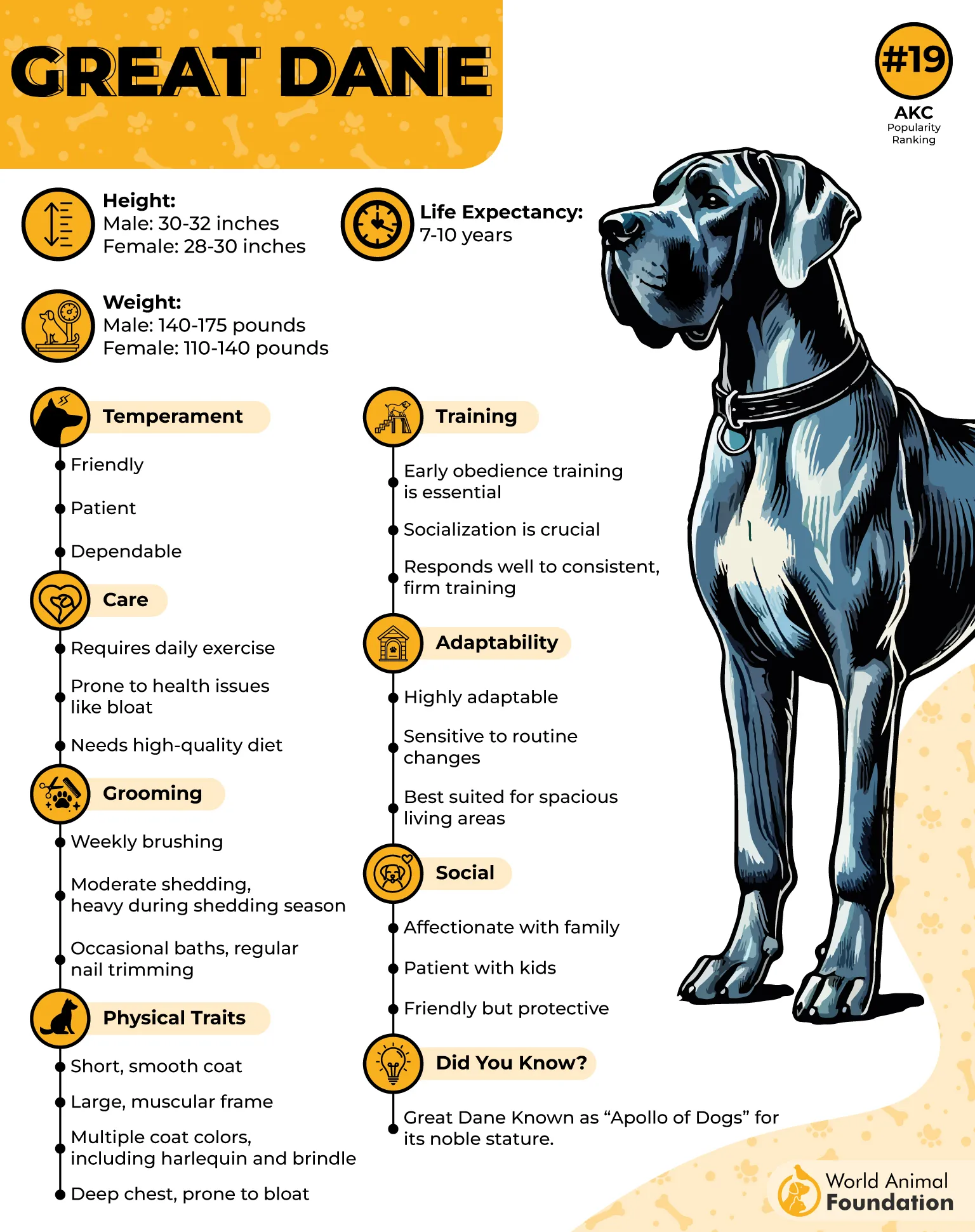
Though often called gentle giants, Great Danes require early socialization and basic training to ensure they don’t accidentally overpower people with their size. They are affectionate and enjoy being close to their human families.
Exercise needs are moderate but essential. Regular walks and short play sessions are usually enough to keep them healthy without overexerting their large joints.
While their size alone deters intruders, Great Danes are more likely to greet guests with curiosity than aggression—especially when raised in loving, social homes.
Fun Fact
Despite its name, the Great Dane originated in Germany, not Denmark, and was once known as the “German Boarhound” before political tensions led to a rebranding.
7. Dogo Argentino
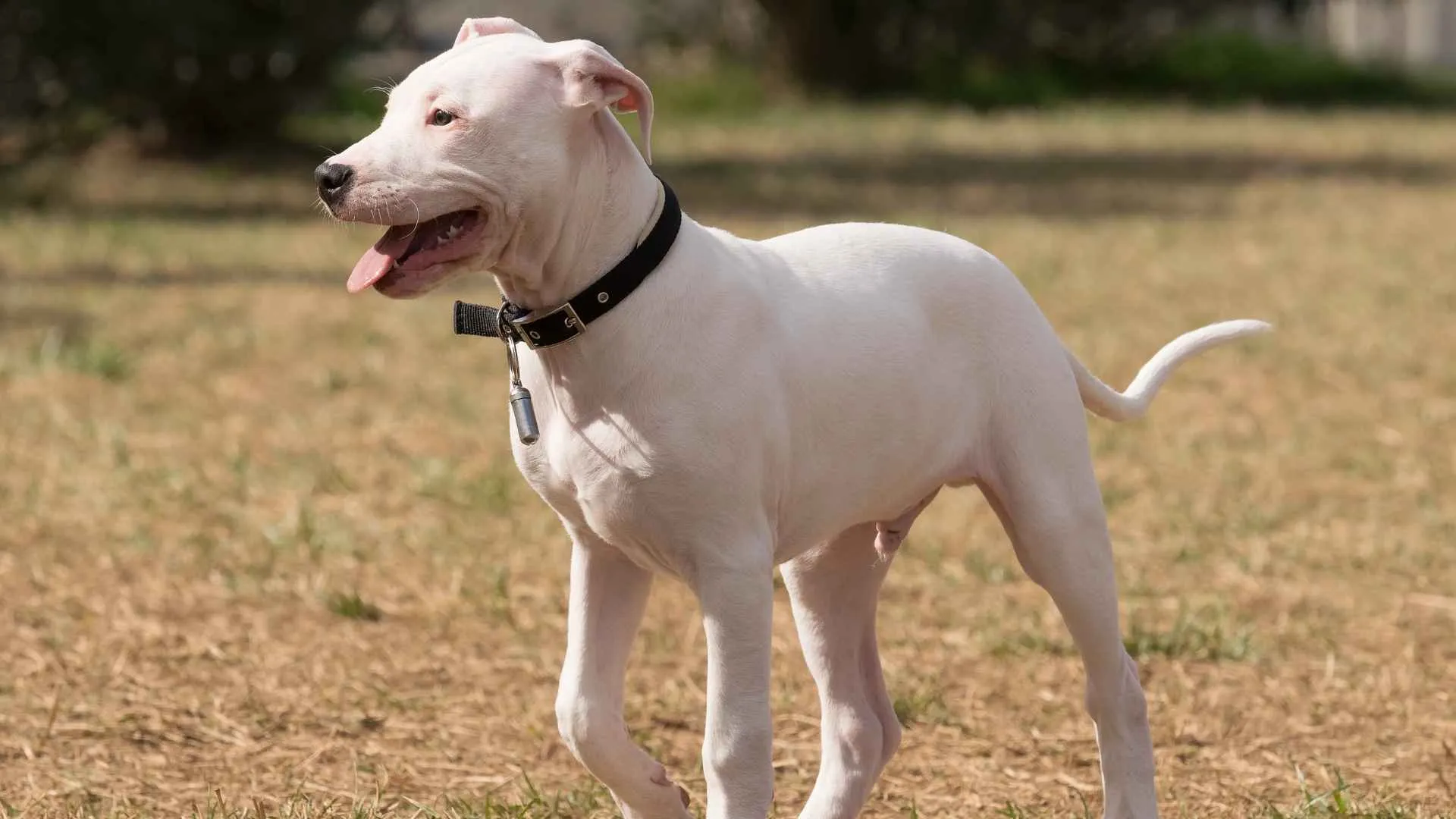
The Dogo Argentino is an athletic and powerful dog breed developed in Argentina for big-game hunting, including wild boar and mountain lions. Its solid white coat and muscular build give it an unmistakable presence.
Bred for stamina, strength, and determination, the Dogo is both a hunter and a guardian. It was designed to work in packs, requiring intelligence and cooperation alongside sheer physical power.

This breed is deeply loyal and protective, especially with its human family. While not naturally aggressive, it has strong instincts that must be directed through early socialization and consistent training.
The Dogo Argentino needs ample exercise and thrives in environments where it can move freely and take on tasks. It is not recommended for apartment living or novice owners.
With the right care, the Dogo becomes a confident, courageous companion. It performs best with owners who understand working breeds and are prepared to invest in its physical and mental needs.
Fun Fact
The Dogo Argentino was created by crossing several breeds, including the Cordoba Fighting Dog and Mastiff types, to produce a fearless yet stable hunting companion.
8. Alaskan Malamute

The Alaskan Malamute is one of the most powerful sled dogs, originally bred by the native Mahlemut people of Alaska to pull heavy sleds over long distances. Its broad chest, muscular frame, and thick coat make it well-suited for harsh Arctic environments.
The Malamute was designed for brute strength and endurance, not speed. These powerful pups excel at carrying heavy loads through snow and ice, often in extreme weather conditions.
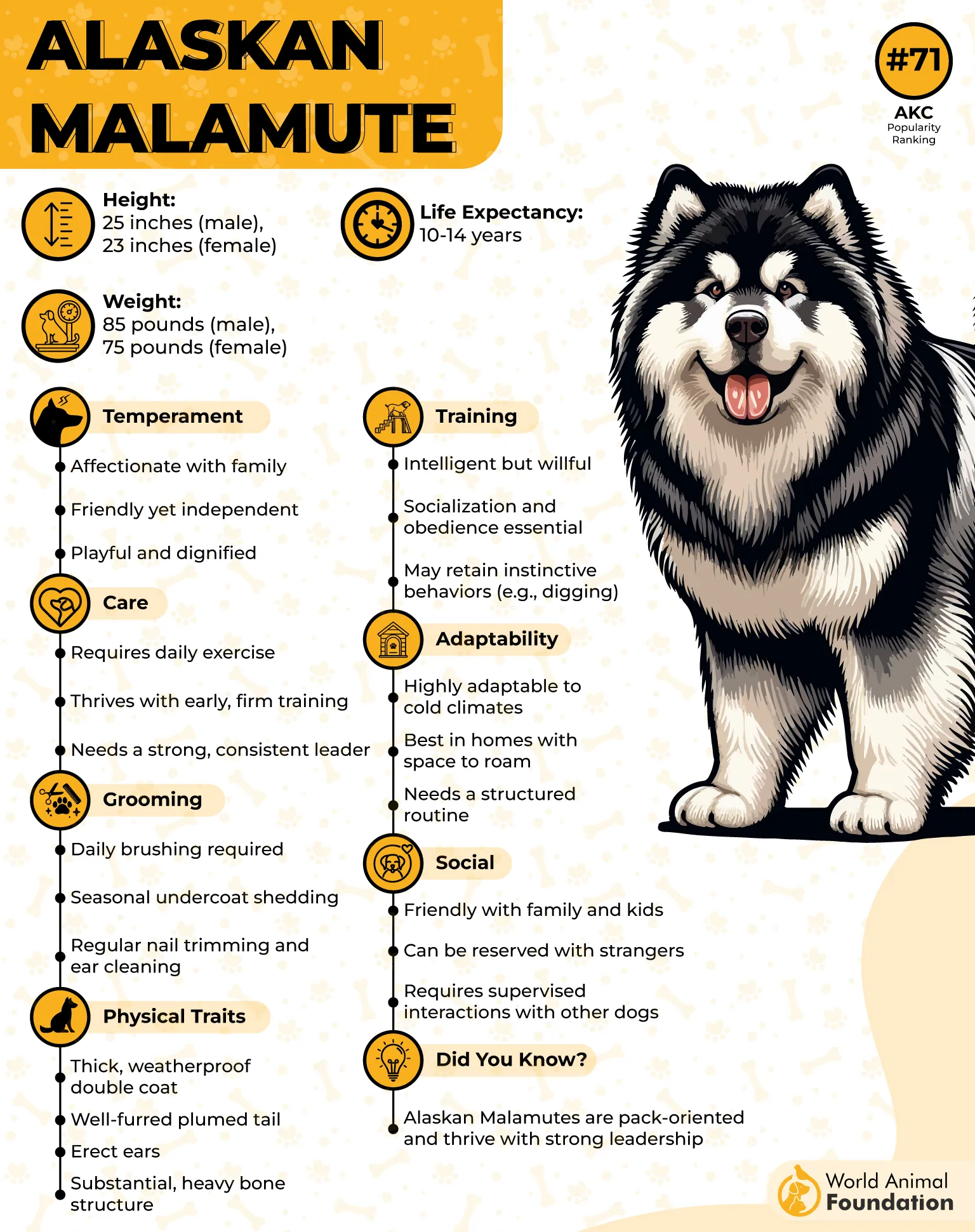
In addition to their physical power, Malamutes are known for their independent yet loyal nature. With proper training and strong leadership, they form close bonds with families but may challenge less experienced owners.
This breed has a commanding presence and requires regular physical activity to stay mentally and physically healthy. Daily walks, structured play, and jobs like pulling carts or hiking keep them satisfied.
Though friendly, their instincts and sheer strength mean they aren’t always suited for homes with small pets or young children unless thoroughly socialized early on.
Fun Fact
Alaskan Malamutes were part of polar expeditions and even helped transport supplies during World War II, proving their versatility and endurance in extreme conditions.
9. Saint Bernard
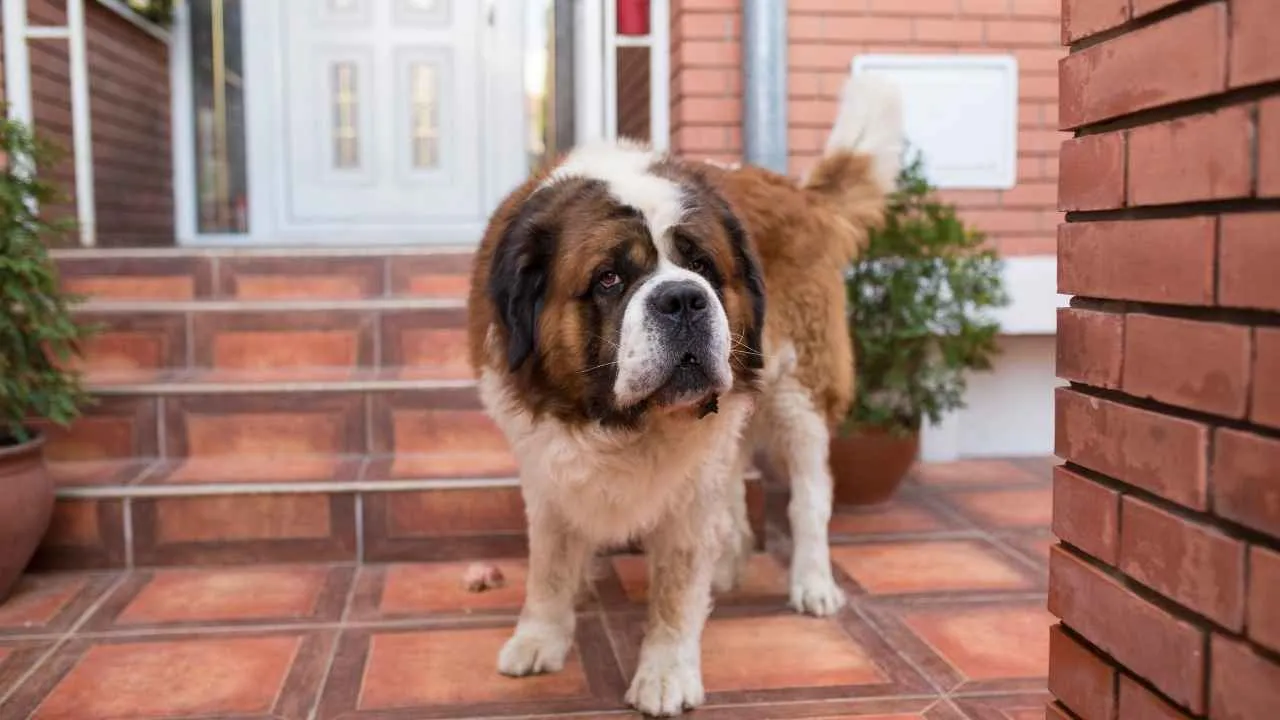
The Saint Bernard is a giant, muscular breed historically bred for alpine rescue work by monks in the Swiss Alps. Their thick coat, steady gait, and calm temperament made them ideal rescue dogs in snowbound mountain passes.
Saint Bernards are surprisingly strong, capable of traversing treacherous terrain and pulling people or gear through snow. While they may look gentle and laid-back, their sheer strength is unmistakable when in motion.
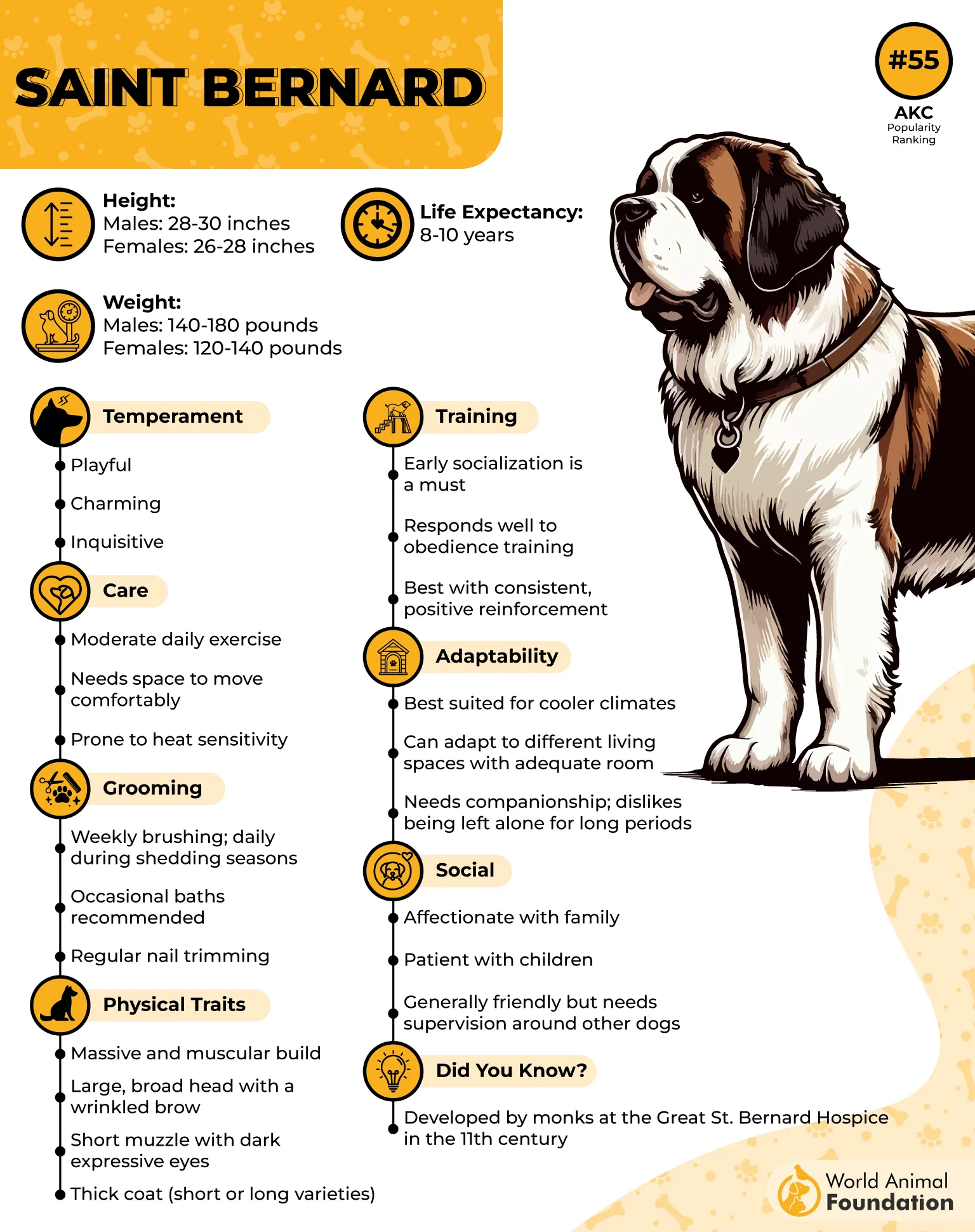
They’re affectionate and loyal, especially with children, but their size requires supervision and training. Early socialization is crucial to ensure they remain well-mannered and manageable around other animals and visitors.
These dogs were initially bred to detect and assist stranded travelers, and they retain a natural protective instinct and sense of purpose. They’re emotionally intuitive and often seek out their humans for comfort and companionship.
Despite their bulk, they have a sweet nature and thrive in homes that understand their needs—especially space, structure, and regular grooming to manage that thick coat.
Fun Fact
Saint Bernards have been credited with saving thousands of lives in the Alps, and the most famous among them, Barry, is said to have rescued over 40 people.
FAQs
What makes a dog breed “dominant” when it comes to physical power?
Dominant dog breeds typically have a combination of strong bite force, muscular build, and the ability to perform physically demanding tasks. These traits were often developed to help guard livestock, herd cattle, or face large predators.
Are dominant dog breeds harder to train because of their strength and confidence?
They can be more challenging without proper training and leadership. Their powerful breed traits demand consistent guidance, especially in roles like police work or military work.
Do dominant dog breeds make good family pets?
Yes, with the right environment and socialization. Many are versatile working dogs that become loyal companions when their instincts and energy are properly managed.
Conclusion
Dominant dog breeds are known for their sheer strength, strong bite, and instinctive drive to protect and serve. Whether guarding property, pulling loads, or confronting predators like wolves or bears, these extremely strong dogs are built for more than companionship.
With the strongest bite force measured in pounds per square inch, they play vital roles in rescue, herding dogs’ duties, and guarding against threats. Many of these dogs are recognized by the American Kennel Club for their abilities in police work and guarding.
Other powerful breeds such as Tibetan Mastiffs, Rhodesian Ridgebacks, and dogs bred to corner lions or hunt large game also rank among the strongest guard dog breeds in the world.


